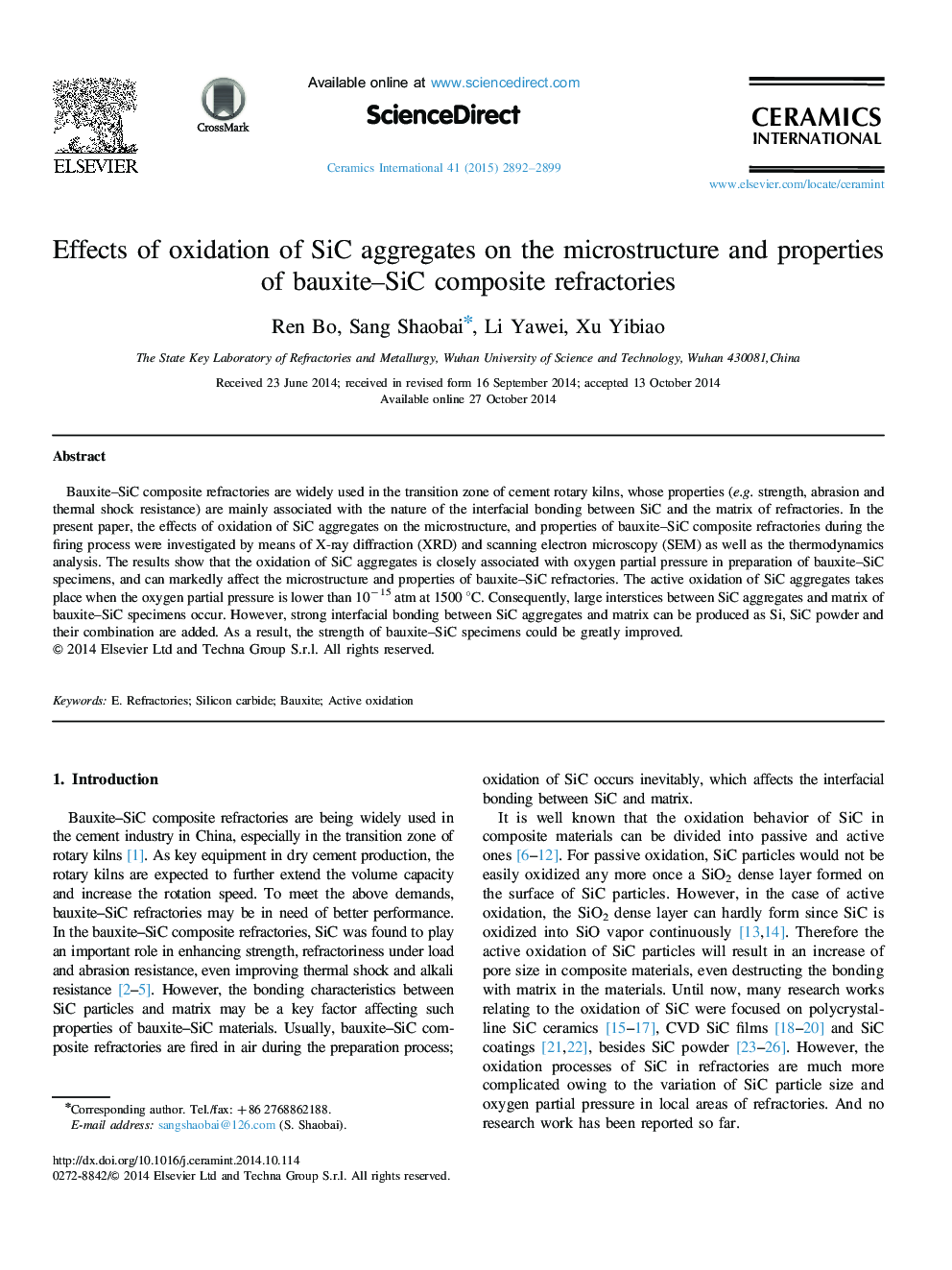| Article ID | Journal | Published Year | Pages | File Type |
|---|---|---|---|---|
| 1460608 | Ceramics International | 2015 | 8 Pages |
Bauxite–SiC composite refractories are widely used in the transition zone of cement rotary kilns, whose properties (e.g. strength, abrasion and thermal shock resistance) are mainly associated with the nature of the interfacial bonding between SiC and the matrix of refractories. In the present paper, the effects of oxidation of SiC aggregates on the microstructure, and properties of bauxite–SiC composite refractories during the firing process were investigated by means of X-ray diffraction (XRD) and scanning electron microscopy (SEM) as well as the thermodynamics analysis. The results show that the oxidation of SiC aggregates is closely associated with oxygen partial pressure in preparation of bauxite–SiC specimens, and can markedly affect the microstructure and properties of bauxite–SiC refractories. The active oxidation of SiC aggregates takes place when the oxygen partial pressure is lower than 10−15 atm at 1500 °C. Consequently, large interstices between SiC aggregates and matrix of bauxite–SiC specimens occur. However, strong interfacial bonding between SiC aggregates and matrix can be produced as Si, SiC powder and their combination are added. As a result, the strength of bauxite–SiC specimens could be greatly improved.
